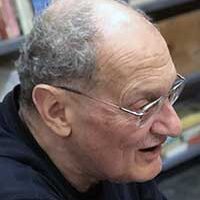An earlier column opened our continuing look into Wal-Mart’s pole vault from a one-store operation in 1962 to the world’s largest corporation. Parallels were drawn with the “miraculous” rise after World War II of Japan’s auto industry, South Korea’s steel industry, etc. (PWW, 1/17-23). Wall Street’s drive to weaken labor and increase profits lies behind both phenomena.
Thus, as the Wall Street Journal pointed out in 1981, “the Japanese [have] had ready access to American industrial know-how. In fact, much of their present industrial sophistication is based on U.S. technology.” That technology was provided for a price.
U.S. corporations also took significant, direct ownership, such as Ford in Mazda and GM in both Isuzu and Suzuki. But loans played an even larger part. Heavy debt is a hallmark of Japanese and South Korean corporations. Wall Street controlled over 75 percent of the world’s capital after World War II.
What were Wall Street’s interests in Asian industries’ reconstruction? Protection against the advance of socialist revolution in Asia was paramount. But profits were to be made off a working class devastated by Depression and war – provided the industries’ products could find an outlet. And for this, access to the U.S. market was essential.
Access to the U.S. market was a key to the “miracle.” The U.S. market was and remains the most tightly controlled in the world, using tariffs, quotas, sanctions, and a thousand other formal and informal tools. But it was opened to East Asia’s steel, autos, tires, televisions and other products.
The influx of these imports cut the ground out from under the United Steel Workers, the United Auto Workers, the Electrical and other U.S. unions without use of troops or courts. Labor here was weakened and cheapened. The financiers incited racism and chauvinism all the way to the bank.
Wal-Mart arose under different conditions. Sam Walton opened the first Wal-Mart in 1962 in tiny Rogers, Ark., paying its staffers, mostly women, 50-60 cents an hour when the minimum wage was $1.15. Well into the 1960s, Wal-Mart was a regional, albeit growing, retailer, with a dozen stores in small towns. But its sales were less than 1 percent those of Sears or Kmart.
Walton was desperate for capital to expand. He found it first in the form of loans from Republic National Bank of Dallas, long subordinated to Wall Street. In 1969, White, Weld & Co. (and Massachusetts Mutual Insurance) invested in Wal-Mart. White Weld was a top U.S. investment banking house, with “important ties with the First Boston Corp. and its associated banks, notably the Rockefellers,” Victor Perlo pointed out in his 1957 book, “Empire of High Finance.” White Weld subsequently became a subsidiary of Merrill Lynch, now in the Rockefeller orbit. Wall Street had sunk its teeth into Walton’s baby.
To be sure, Wall Street also invested in every other significant retailing venture in the U.S. But Sam Walton was proving unusual skills at keeping overhead costs down, labor cheap, even management cheap – and above all fighting unions.
A professional union-buster, John Tate, figures centrally in Wal-Mart’s history. In his account of Wal-Mart’s rise, Wall Street Journal reporter Bob Ortega writes that for Tate, union-busting “wasn’t just a job; he loathed unions with a passion.” Tate quickly rose from a consultant to a top Wal-Mart executive. According to Ortega, a union-fighting seminar led by Tate “laid much of the foundation of what would become Wal-Mart’s corporate culture.”
Central to that culture was giving managers and longer-term employees a stake in exploiting those below them, using bonuses and stockholdings, but also a say on policy. With bonuses tied to their store’s margins, store managers thus had an interest in, say, pressing workers not to take breaks. Buyers have a similar interest in cutting supplier prices and deadlines. Even a layer of workers is made to believe – through propaganda and the stockholdings – that they have an interest in Wal-Mart’s use of super-exploited temporary and sub-contracted workers.
The Wal-Mart culture that Walton and Tate designed and built was in many ways nothing more than an exploitation-pyramid-scheme.
In 1973, the world capitalist economy took a marked turn for the worse. Profit margins fell. Labor had to be cheapened and the costs of selling goods had to be cut to protect profits. Subsequent columns will continue this examination of Wall Street’s role behind Wal-Mart’s rise into the world’s biggest corporate outlaw.
The author can be reached at pww@pww.org.

MOST POPULAR TODAY


Communist Karol Cariola elected president of Chile’s legislature

Zionist organizations leading campaign to stop ceasefire resolutions in D.C. area

Afghanistan’s socialist years: The promising future killed off by U.S. imperialism

High Court essentially bans demonstrations, freedom of assembly in Deep South






Comments